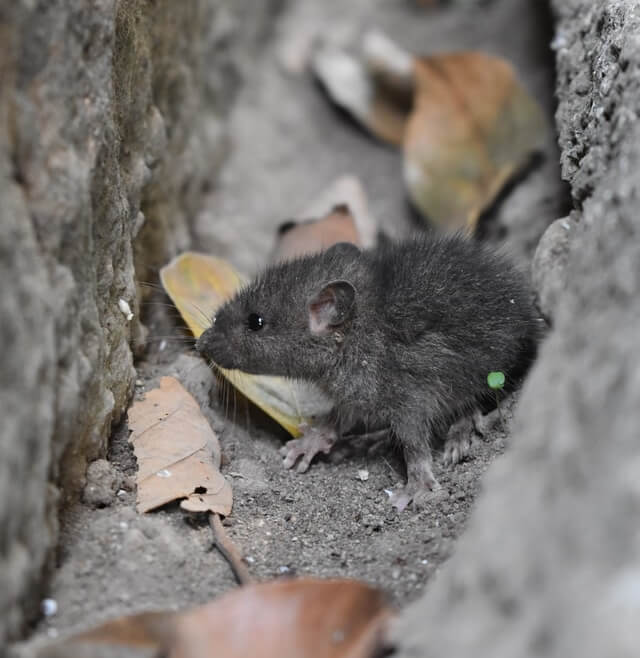Did you know mice can squeeze in through any crack or crevice as small as one-fourth of an inch in diameter? That’s about the size of an eraser cap point! Mice do have bones, but they are very soft and can bend as they sneak through tight spaces. They also don’t have collar bones, so they can squeeze in any opening about as big as their spine with a little flesh and fur. The result is that they can squish pretty well.
In this post you will learn how to know if mice can get in your home.
Once inside the home, they stay in warm places like the furnace room or laundry room, away from active areas of your home. They may make nests in wall voids or in hardly-touched storage boxes filled with soft materials, for example.
If you ever see a pile of little pieces of insulation, you may very well have a mouse problem.
Mice also leave droppings everywhere they go. They don’t have much bladder control so they leave urine as well. Consequently, this is how mice can transmit diseases to people. It also serves as a pheromone scent for other mice that may be looking around for a warm place to stay.
Table of Contents
Quick Tips of Where to Check for Mouse Activity:
- Furnace room
- Around the sill plate up high for any mouse droppings
- Behind the washer or near the laundry vent for any mouse signs
- Storage room
- Any boxes with old clothes or other soft, fabric-type materials
- Behind boxes or storage shelves as able
- Attic or crawl space
- Whether your attic is a walk-in or crawl space, peak your head in with a flashlight to look around.
- Attics can be a play area for mice, check for mouse droppings
- Keep an eye out for any shredded insulation, this is also a sign of mouse activity
- Kitchen
- Behind the refrigerator and stove for mouse droppings
- Underneath the kitchen sink for mouse droppings
- Inside cabinets and pantries for teeth marks on pantry food
- Living room
- Mice’s teeth never stop growing throughout their life, so they eat a lot and the gnaw on things to help file them down.
- Some common things mice chew on are furniture, sheet rock or drywall, electrical wires, and more.
- Check for rub marks or grease marks. In frequently traveled areas, mice will leave a dark color along the walls from where their fur rubbed up against the wall. Those markings are the oils and dirt from their fur.
- The exterior
- Check the foundation. Learn more of closing mouse entry points
Pro Tip:
If you ever wake up in the middle of the night and can’t get back to sleep, take a walk around your home. Check the bathrooms, kitchen, and basement out. Most pests are nocturnal and if you can handle live pest activity, of course this can be a great time to check for pest activity. For additional tips and tricks regarding mice, check out our rodent category within our blog.
Conclusion
In this short post you what areas of the house mice like to stay and where to find mouse activity. Mice are smart, but can be predictable. It is good to brush up your knowledge on mice behavior in order to eliminate them from your home.
Done Right Pest Solutions offers a solution to rid your home of mice. Whether you want an exclusion service in the fall for prevention, a one-time service to eliminate the mice you have, or year-round protection to not have to think about it anymore, we’ve got options for you! Call us today for a free estimate 651-342-9489!
Now that you’ve learned how to know if mice can get in your home, you can continue your education by reading other blogs. If you’d like to learn How to Perform Your Own Mouse Service, Done Right, check out our infographic. Check out our Complete Mouse Control Guide that has all this information and more!
Did you find this short post helpful in where to look for mouse activity? If so, comment below. Be sure to leave any helpful feedback of what you’d like to see added to this post for future content updates.

